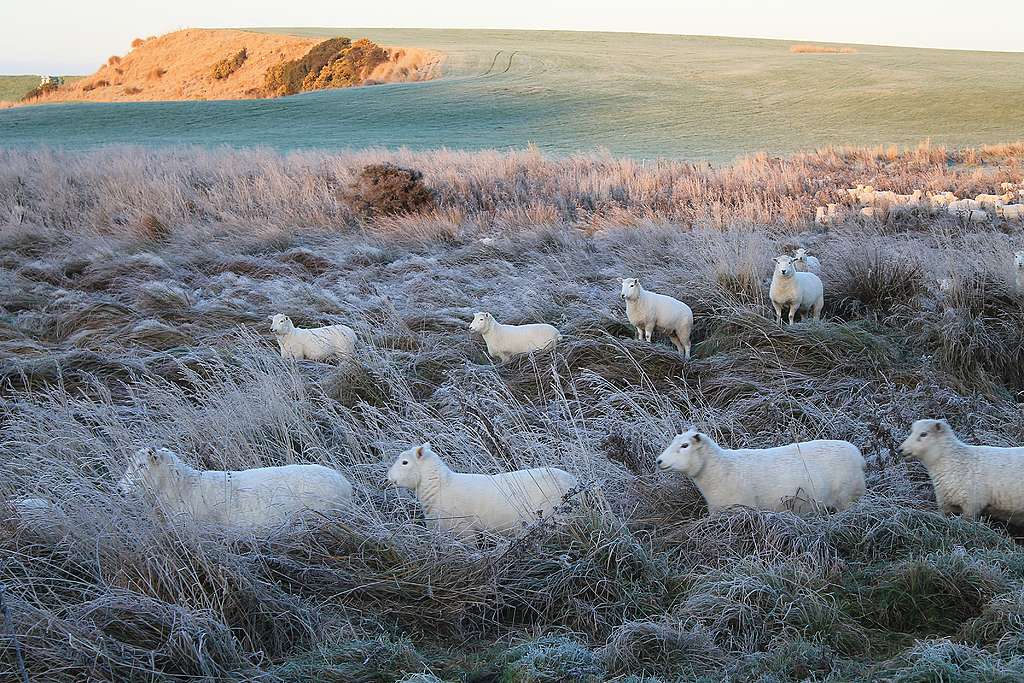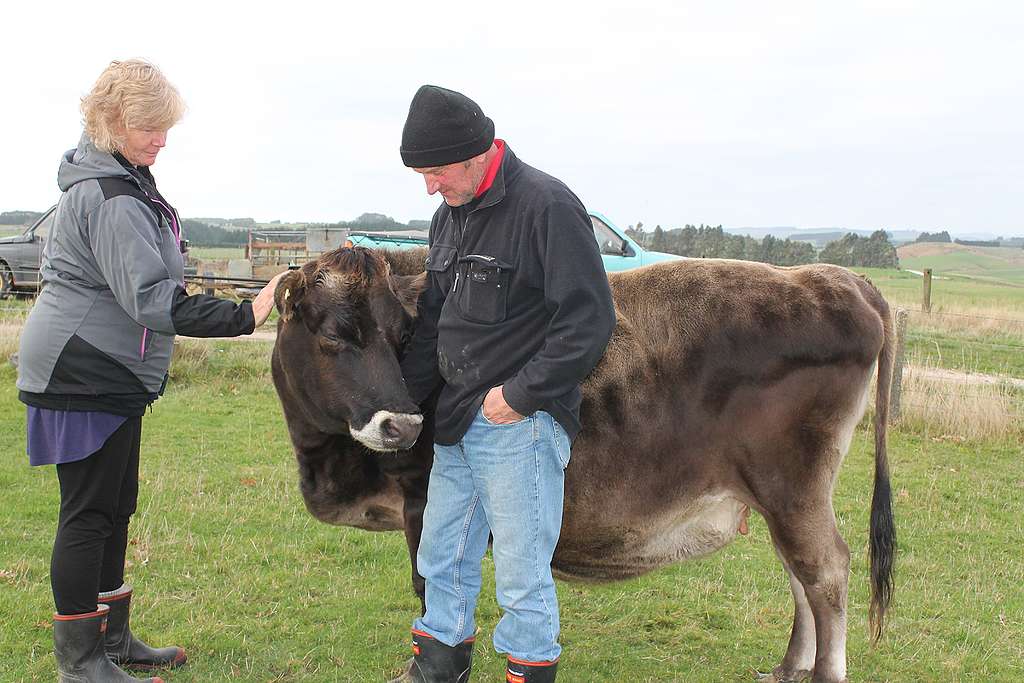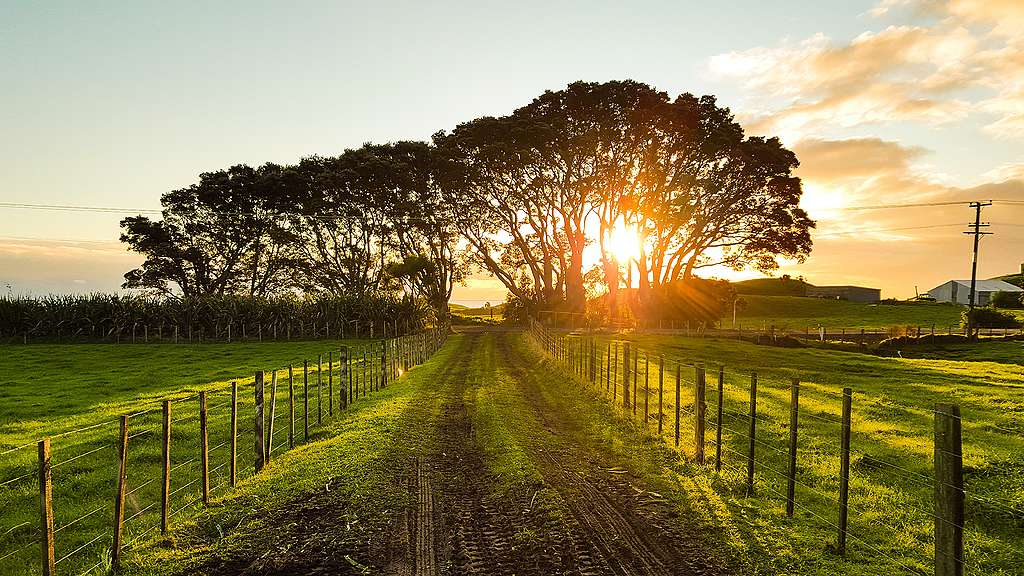Philippa Jamieson visits an organic sheep and beef farm where crop rotation, diverse pasture species and natural fertilisers contribute to the production of a premium product that prioritises soil and climate.
Amid the gently rolling hills, lush green pasture and big skies of Southland lies Lindhurst Organics, a family farm that’s been certified organic for the past 15 years. George Stevenson’s grandfather bought it in 1937 through a tender system, and since then, it’s been mainly a sheep and beef farm.

George lives with his wife Bronnie in the family home he grew up in: “I just swapped bedrooms.” He came home with a BComAg from Lincoln University in 1987, went into partnership in the farm with his father, Douglas, in 1991, and bought the farm from his parents in 1996.
George and Bronnie’s three children are away studying. Son Ashley (19) is doing a BComAg at Lincoln, and twin daughters Olivia and Cassidy (18 in July) are at boarding school in Dunedin. The kids are passionate about getting out on the farm and working with the animals in their holidays and weekends, and all want to return there eventually.
Motivated by health
The reasons for going organic began to stack up until it became the obvious thing to do for George and Bronnie. “One driver was health,” says George. “My dad had cancer twice, and other farmers around had cancer too. Going organic was something we could do to try to improve things.”
Bronnie, a “townie from Christchurch”, has a secretarial background and worked in the mental health sector for eight years. She realised that the profit motive often eclipsed the focus on health, and saw parallels in farming.
“I saw the dance the pharmaceutical companies did with the doctors, and then on the farm the fertiliser companies were doing the same kind of dance with the farmers,” she says.
She’s sceptical about lab-grown meat and milk. “Will the discerning, informed, educated customers want it? I don’t think it’s going to do human health any good.” And it looks likely to be using genetic engineering, which is not part of the organic ethos.

© PHILIPPA JAMIESON
Premium products
Another motivating factor to convert was that in 2006 organic meat was fetching twice the price of non-organic meat. The Stevensons continue to get premiums for their organic meat and wool. They support NZ Organic Meats with their lamb, which is slaughtered and processed in Oamaru, and most of it is exported. “To quote Joel Salatin – our animals live a great life and have one bad day,” says George. Their wool is also exported, via Bloch & Behrens, to an American bedding manufacturer wanting a pure product that’s naturally fire-retardant.
Fortuitously, when the Stevensons were considering organic certification, Organics Aotearoa NZ (OANZ) got government funding to help farmers transition. Lindhurst Organics entered OANZ’s Smart Start programme and a certified-organic farmer mentor visited the farm and gave them advice about converting.
The farm attained full organic certification with BioGro NZ in 2007, after just two years, rather than the typical three-year period, because they could prove they’d already started implementing organic practices such as not using synthetic or acid-treated fertilisers. “In hindsight we needed a more gradual transition,” says George. “We were still at the stage of getting better at stockmanship.”
Originally their sheep were a Romney base that they then put a Finn Texel over. quite chemical-dependent, says George. They now have a dual purpose Texel-Perendale cross.
Climate-friendly farming
Agriculture produces 50 per cent of New Zealand’s greenhouse gas emissions, with methane-producing ruminant animals like cattle and sheep a major part of this.
However, George says, “Animals are part of the solution, not the problem, because they’re part of the fertility cycle.”
A diversity of pasture species helps reduce animal methane emissions, and healthy soil allows methane-eating bacteria to thrive. Biologically active soils can soak up more rain, making them better able to withstand the extremes of flooding and drought, and less prone to erosion.
Organic practices that improve the soil also help sequester carbon. “Pastoral land, managed well, can sequester more carbon in the soil than pine trees can,” says George. “It’s a win-win because you can grow food on top of it too.”
Ploughing does release carbon, but pastoral farmers don’t plough much. The Stevensons plough any one paddock only every 15–17 years, allowing soil biology to flourish undisturbed and soil carbon to build up.
Their rotation for any given paddock is: year one – swedes and turnips for winter fodder; year two – ‘Kestrel’ kale; and year three – pasture (ryegrass, cocksfoot, timothy, red and white clover, chicory and plantain), which remains for about 15 years. While the animals are on crops, they also have access to meadow hay.
Soil fertility
Fertilisers used are guano, lime, trace minerals, seaweed fertilisers, liquid fish fertiliser, a carbon-source product with mycorrhizal fungi as an activator, and humic and fulvic acids.
George shows me some soil tests – the nitrogen is off the chart! He puts it down to active soil biology. The local soil, Woodlands silt–loam, has 20–30 per cent clay in the topsoil, and typically 5–7 per cent soil organic matter. Lindhurst, however, boasts 8–12 per cent soil organic matter. Some volcanic deposits of crumbly red rock on the farm are used to keep tracks and gateways firm and dry.
Care for one and all
The Stevensons maintain good stock health from the ground up: building up healthy soil biology that nurtures healthy plants and animals. For intestinal worms, they make an organic mineral tonic with seaweed, apple cider vinegar and homeopathics. The sheep also get vitamin B12, selenium and a five-in-one vaccination. If the worm burden persists, they use one non-organic drench – the sheep still meet the EU’s organic standards. Any sheep needing two or more non-organic drenches are sold as non-organic.
While most of the farm is in pasture, there are some shelter belts, riparian vegetation and gullies with native and exotic species like matagouri, flax, tussock, elders. The beekeepers who place their hives on the farm like the gorse because it flowers a couple of times of year, helping them overwinter the bees. There are ducks on the pond, plenty of other birds, insects, and healthy aquatic life including frogs and eels.
Open to change
About five years ago Open Country offered an organic milk contract, processing the milk at Awarua near Bluff. This was the catalyst for the Stevensons to lease out nearly two-thirds of the farm to organic dairy company Aquila. They’ve gone from farming 2000 ewes and 100 breeding cows with corresponding replacement stock, down to 450 ewes and 150 replacement hoggets. The leased block produces more than enough winter crops and baleage for the cows there, and excess feed goes to other Aquila farms.
George and Bronnie are continually learning, innovating and trying new things at Lindhurst. They frequently mention farmers and mentors who have influenced them, including fellow members of the Southern Organic Group, a supportive farmer group that’s been going since 1984.
Future possibilities include growing oats – an oat milk processing plant is planned for Southland. Whatever they do on the land, it’s all about long-term sustainability, family farming and generational succession.
This story was originally published by Organic NZ magazine and is republished here with permission.
Copyright Organic NZ Magazine.

Call on Christopher Luxon to set up a billion dollar fund to transition New Zealand away from industrial to regenerative agriculture.
